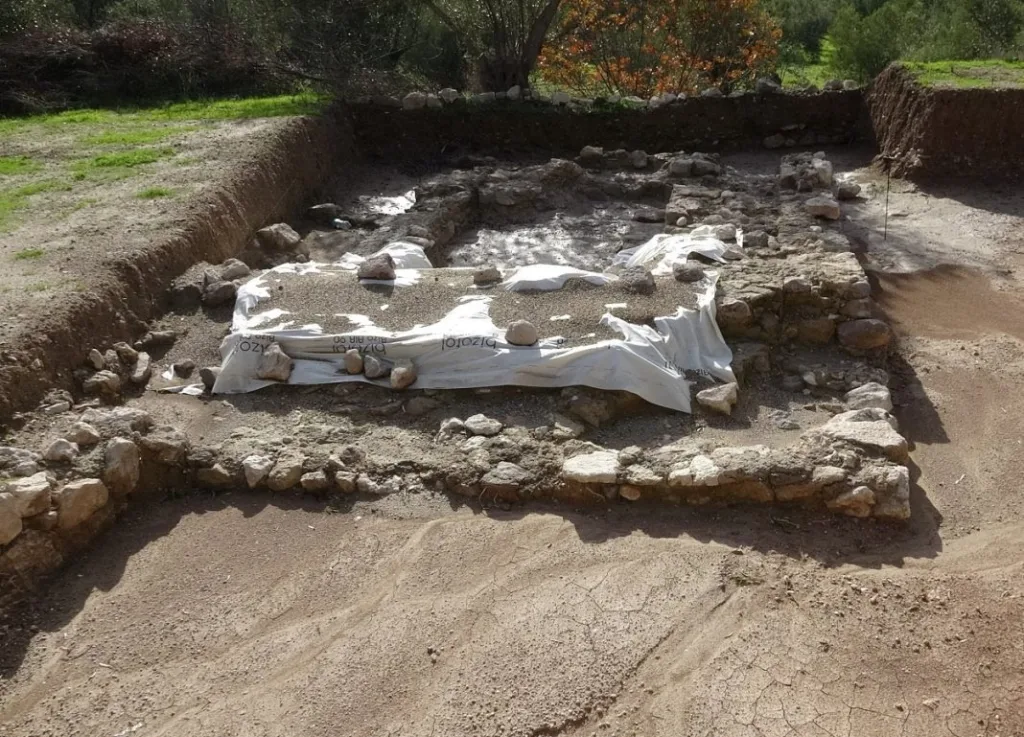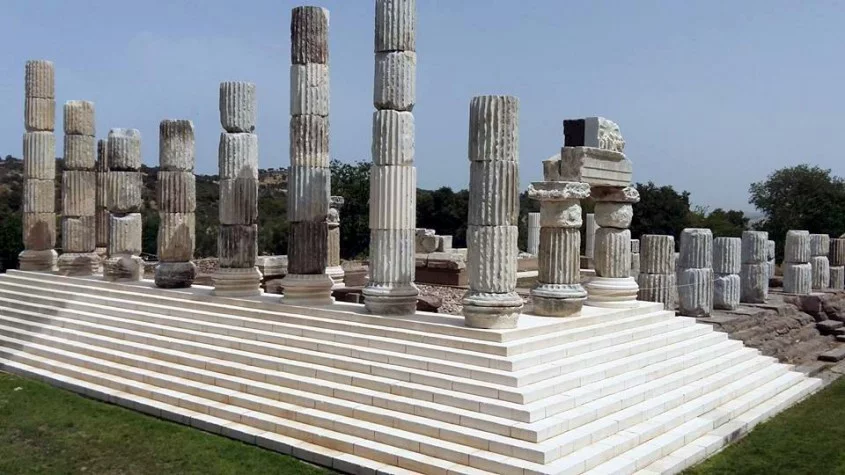The ancient Greek city of Hamaxitus was located in present-day Gülpınar, Turkey’s Çanakkale Province. Originally settled by Mytilenaeans in the 8th or 7th centuries BC, it became one of the Actaean cities in the Troad region that Athens took control of after the Mytilenean revolt in 427 BC.
In later years, Hamaxitus grew in religious importance with the construction of the Apollon Smintheion sanctuary and the Temple of Apollon Smintheus, dedicated to Apollo Smintheus, a deity associated with mice and rats. Recent excavations by the Çanakkale Onsekiz Mart University’s Department of Archaeology have uncovered a 2,000-year-old monumental tomb from the Roman period near the sanctuary. The tomb, believed to have been commissioned by high-status Roman individuals, contained more than 10 burials, including disturbed skeletal remains of children and adults.

These findings provide new insights into Greco Roman burial practices in Hamaxitus and highlight the continued significance of the Apollon Smintheus sanctuary during the Roman period. The excavation team aims to not only learn about the burial traditions of past communities but also determine the boundaries of the sacred area by exploring the distribution of sacred structures. Based on artifacts found in the well-preserved room of the tomb, estimated to be from around the first century AD, the researchers have dated its origin to approximately 2,000 years ago.
Cult of Smintheus
“Sminthos” is the name given to the mouse in the ancient Mysia language. The mouse is the holy animal of god Apollo. Therefore, the cult of Smintheus is closely related to mice. In the birth of the cult of Apollo, the damage and disasters caused by the mice have a big share. God Apollo established justice by punishing the powerful kings for their injustice to their people, by plague epidemics spreading with mice.
According to Homer’s Iliad epic, the Greek army to Troia plundered the cities along the way and kidnapped women and girls. Agamemnon, the king of Akha, headed by the Greek army, stopped by Chrysa (today’s Gülpınar) and kidnaps the daughter of the priest of the temple of Apollo Smintheus. The priest, who is trying hard to get his daughter back, calls on his God Apollo and asks him to bring his daughter back. Angry Apollo infects the Greek army with the plague epidemic through mice. The Greek army breaks through the plague and has to give her back. The priest’s daughter is brought to Chrysa under the supervision of Odysseus. In gratitude, the god Apollon was sacrificed in the temple.


